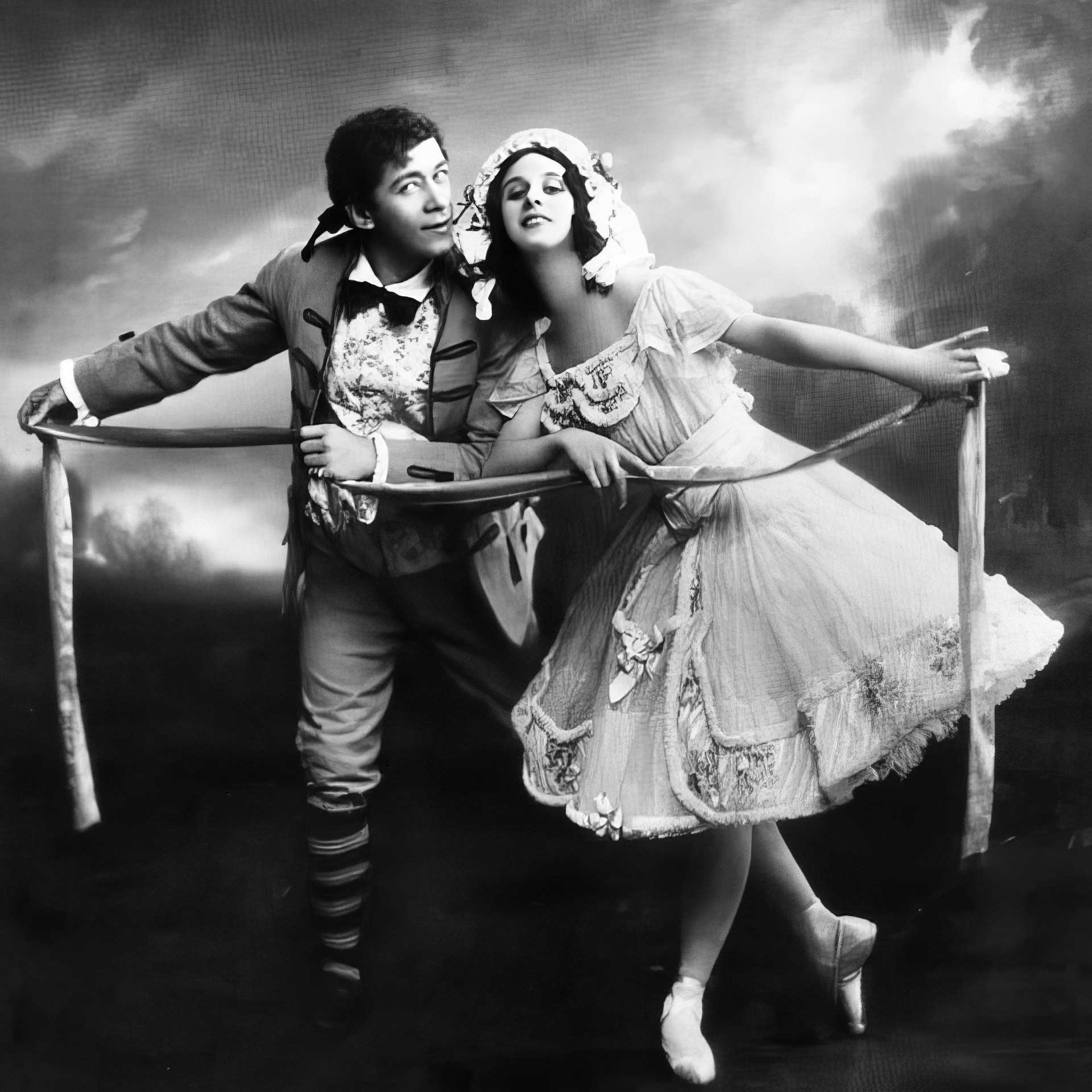people » Nicolas Legat
Nicholas Legat (1869-1937). Russian dancer, choreographer and teacher
Nicholas Legat was born in St Petersburg on 27 December, 1869. Both his parents were dancers at the Bolshoi Ballet in Moscow, having come to Russia from Sweden, and one of his grandmothers had been a ballerina at the Paris Opéra. Legat enrolled at the Imperial Ballet School in Petersburg in 1880, graduating in 1888, and joined the Maryinsky Ballet, where he was an outstanding dancer and partner, as well as a teacher and choreographer. He was a pupil of Christian Johansson and succeeded him as professor of the Class of Perfection, having first begun to teach in 1889. From 1905 until 1914 he was both first dancer and ballet master.
As a dancer, among his many roles, Legat achieved his greatest triumph in the role of Gringoire in Esmeralda and marked his 25th anniversary as an Imperial dancer in 1914, an occasion attended by the Tsar and his family. He worked with many leading ballerinas of the day, including Pierina Legnani, Mathilde Kschessinska, Anna Pavlova and Olga Preobrajenska. Among those he taught were Vaslav Nijinsky, Mikhail Fokine, Adolph Bolm, Agrippina Vaganova and Vera Trefilova, as well as some of the ballerinas he partnered.
As a teacher he looked to the earlier, gracious French style than to the technical advances of Enrico Cecchetti, who had come to the Maryinsky in 1887. As a choreographer, Legat collaborated with Marius Petipa and most notably with his brother Serge (1875-1905), who was Nicholas’ equal as a dancer. Their most famous and successful work was The Fairy Doll, created in 1903, which broke away from the classicism and fairytale atmosphere of Petipa, introducing instead a wealth of humour and elements of the circus and the contemporary world on to the stage. However, Legat strongly opposed the modernistic developments of Fokine.
Possibly partly because of his relationship with Nadine Nicolaeva, a pupil who was unable to obtain a contract at the Maryinsky, Legat left Russia in 1914 to tour abroad, although they returned in 1915. Legat then resigned from the Maryinsky and worked at various venues and in various roles. In 1919 Legat divorced his first wife and married Nicolaeva. They had a close but somewhat troubled relationship, which continued until Legat’s death. The 1917 Russian Revolution was an uncertain time for the Legats, as for so many others, and they eventually left Russia forever in 1922, first to Berlin and Paris, before settling in London to dance in music halls and to teach.
In 1925 Legat became ballet master of Serge Diaghilev’s Ballets Russes in Paris and Monte Carlo, but this, again, was unhappy, in part because of Nicolaeva’s inability to be cast in the roles she wanted. The couple settled in England in 1926. Nicholas Legat then became a legendary teacher at 46 Colet Gardens, Hammersmith, where those taught by him included Ninette de Valois, Frederick Ashton, Margot Fonteyn, Anton Dolin and André Eglevsky, and he was also associated with the Camargo Society. However, despite attempts to do so, he was unable to form a ballet company of his own. He died in January 1937.

